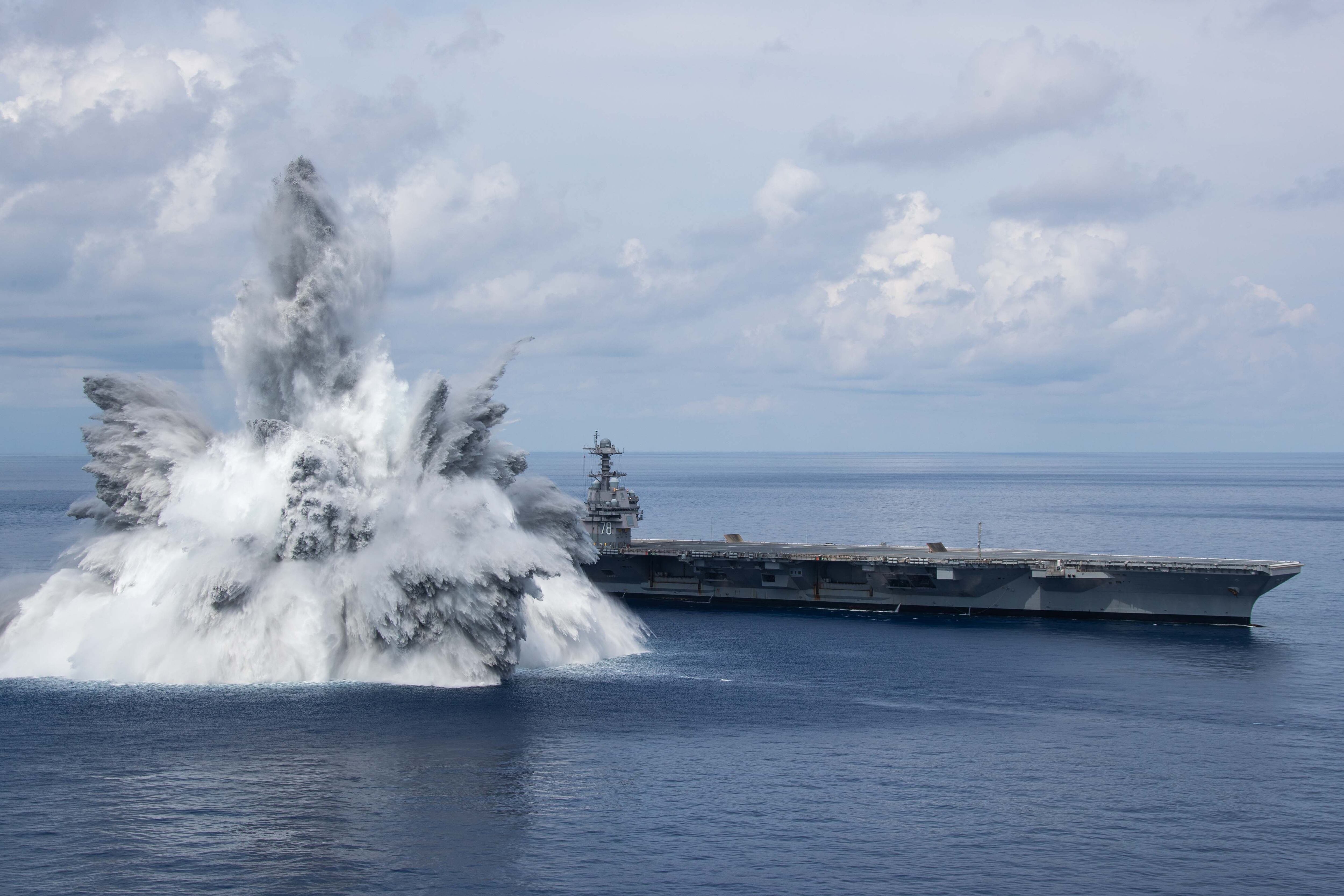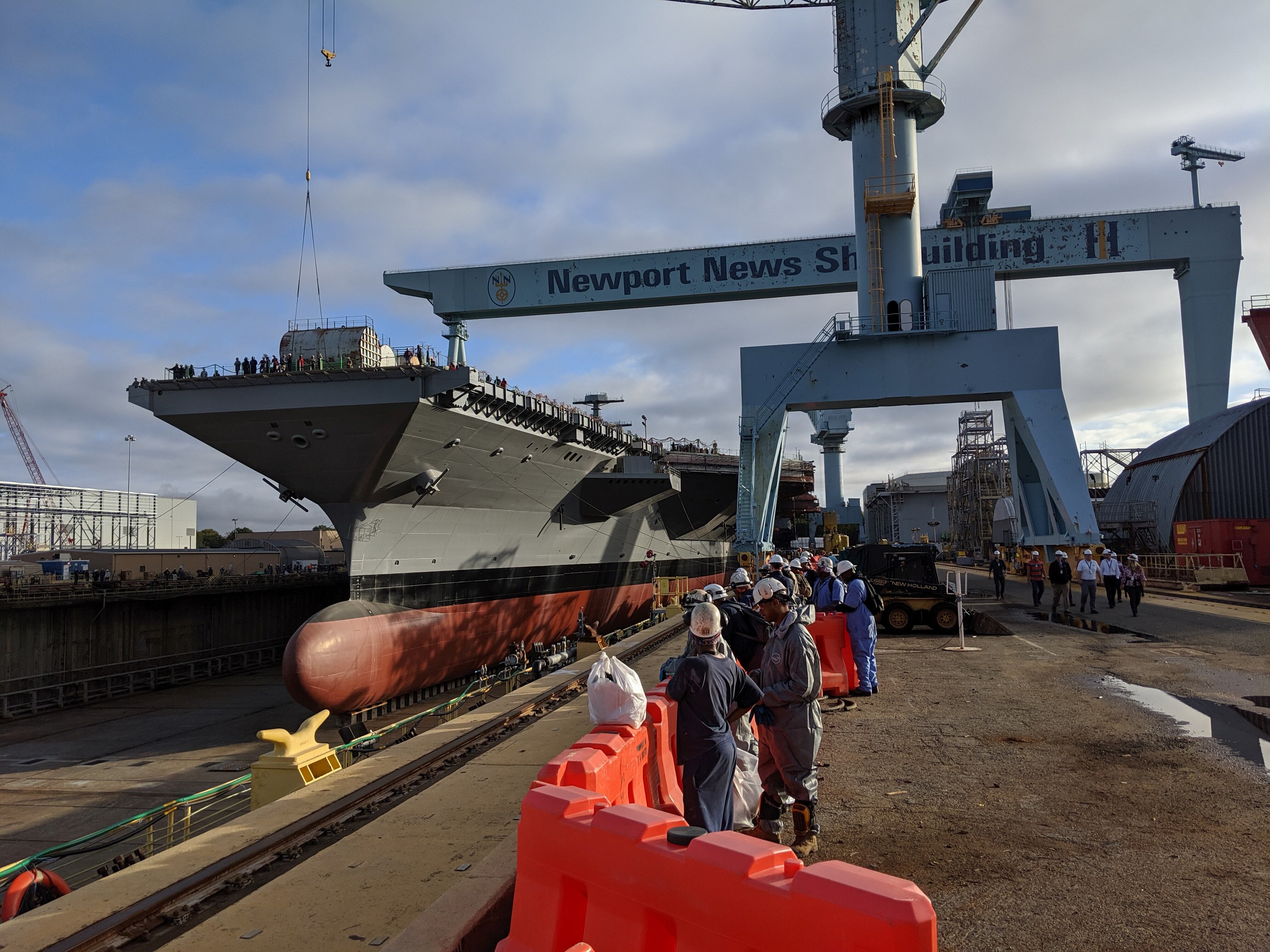The Navy has been cannibalizing parts from a future aircraft carrier to ensure that the much-delayed and costly carrier Gerald R. Ford is ready to deploy next year, officials confirmed this week.
None of the parts transferred to Ford from the under-construction John F. Kennedy are expected to impact that future carrier’s construction schedule, according to Capt. Clay Doss, a Navy spokesman.
The Kennedy cannibalization includes “HMI screens for stores elevators as well as motor controllers, power supplies, small pumps, limit switches and valve actuators for various systems throughout the ship,” Doss said.
“This is not unusual early in a program and will occur less often as supply support matures,” he said.
Doss called the cannibalization of parts “a project management tool” outlined in the Navy’s joint fleet maintenance manual.
RELATED

The process allows for parts and material to shift between vessels in maintenance or under construction.
“It occurred only after confirming the parts or materials were not available in the supply system and/or that alternate sources were not available,” Doss said. “A replacement plan was also required in each case.”
Duane Bourne, a spokesman for Huntington Ingalls Industries, which is building Kennedy, said such a practice is common with first-in-class ships when supply systems for those ships are still being established.
“We are working with our Navy customer to build a supply system to include spare parts for the Ford class,” he said. “Kennedy is scheduled to be delivered in 2024 with its complete warfare systems and with the Joint Strike Fighter (F-35C) capability.”
A lack of parts for the Navy’s premier next-generation carrier is the latest issue to befall Ford.
It was originally slated to deploy in 2018, and the carrier’s cost had ballooned from $10.5 billion to $13 billion as of this summer.
The ship has faced a series of technical problems and equipment malfunctions as the Navy works to fold in 23 new technologies on the ship, such as advanced weapons elevators and the electromagnetic aircraft launch system, or EMALS.
Cannibalizing Kennedy to make sure Ford is good to go is understandable “but a really bad habit,” according to Bradley Martin, a retired surface warfare officer who spent two-thirds of his 30-year Navy career at sea.
“Ford is not brand new,” Martin told Navy Times. “This should have been known.”
RELATED

Such actions don’t raise red flags in terms of immediate impact, but it does raise questions about sparing priorities, said Martin, who now leads the National Security Supply Chain Institute at the Rand Corp.
“It indicates that the Navy hasn’t done the work of figuring out necessary sustainment and is raiding something readily available — a ship in construction — when it really needs to be programming reliable spares,” he said.
USNI News first reported news of the Kennedy cannibalization.
Despite ballooning costs and technological difficulties, Navy officials say Ford is getting there.
The flight deck has been certified and an air wing has embarked, among other milestones.
Ford successfully completed shock trials this summer, the first time a carrier had undergone underwater shock testing since the carrier Theodore Roosevelt did so in 1987, according to the Navy.
The final shock off the Florida coast registered as a 3.9 magnitude earthquake, and the Navy said Ford suffered less damage than expected and no major system casualties following detonation of the 40,000-pound charge right off the starboard beam.
Geoff is the managing editor of Military Times, but he still loves writing stories. He covered Iraq and Afghanistan extensively and was a reporter at the Chicago Tribune. He welcomes any and all kinds of tips at geoffz@militarytimes.com.




